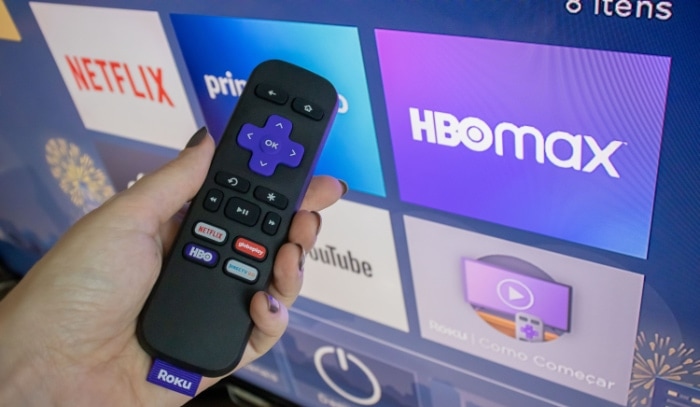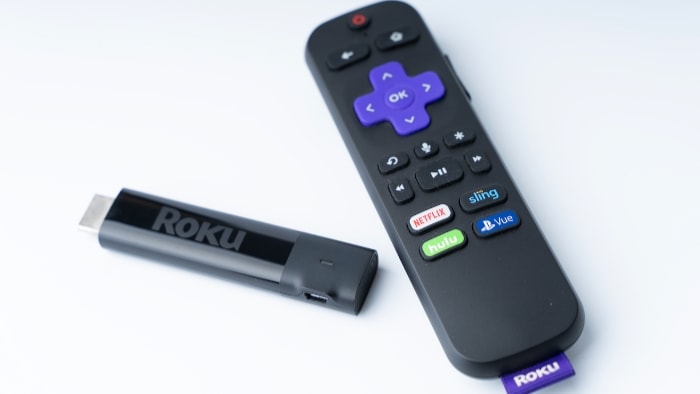Essential Fixes for a Roku That Won’t Stop Restarting

Roku has steadily grown in popularity, becoming a staple for many households seeking diverse streaming options. As with any tech device, occasional hiccups can arise, and one such hiccup that some Roku users encounter is their device restarting frequently.
Understanding the root of this problem and how to troubleshoot it can ensure seamless streaming and prolong the life of your device. This blog aims to guide you through the possible reasons behind these unexpected restarts and offer solutions to get your Roku back to optimal performance.
The Most Common Reason: Overheating
When it comes to electronic devices, heat production is a natural byproduct of their operation. However, when this heat isn’t managed effectively, it can lead to a series of complications.
Overheating stands out as the leading culprit behind frequent restarts in many Roku devices.
How Electronic Devices Generate Heat
All electronic devices, including your Roku, generate heat as they function. This is a result of electrical currents flowing through their internal components.
While these components are designed to tolerate specific temperature ranges, consistent exposure to elevated temperatures can pose challenges.
Signs Your Roku is Overheating
Hot to the Touch: If your Roku device feels warmer than usual, this is a primary indication of excessive heat production.
Warning Screen: Roku devices come equipped with a built-in warning system. If overheating occurs, a red thermometer icon or a similar warning screen may appear, signaling that the device is running hotter than its safe limit.
Consequences of Prolonged Overheating
Potential Damage: Just like any electronic device, a Roku can sustain damage when exposed to high temperatures for extended periods. Internal components can degrade faster, leading to reduced functionality or total failure.
Reduced Lifespan: Over time, repeated overheating can reduce the overall lifespan of the device, meaning you might have to replace it sooner than expected.
Frequent Restarts: As a protective measure, Roku devices may automatically restart when they detect high temperatures, aiming to prevent damage by temporarily shutting down.
Other Possible Reasons for Restarting
While overheating remains a primary reason for frequent Roku restarts, several other factors can also cause this behavior. Understanding these secondary causes can help efficiently troubleshoot and ensure a smoother streaming experience.
Software Glitches or Bugs
Every piece of electronic hardware runs on software, and Roku is no exception. Sometimes, glitches or unexpected errors can emerge, causing the system to become unstable.
Corrupted Data: Over time, bits of data can become corrupted, leading to unstable operation.
Faulty Updates: Occasionally, a software update might not install correctly, which can result in recurring restarts.
Power Supply Issues
The way your Roku is powered plays a crucial role in its operation.
Inconsistent Power: If the power supply to your Roku isn’t consistent, it might restart frequently. This can be due to faulty power outlets or unstable electricity in your home.
Third-Party Adapters: Not all adapters are made equal. Using a non-standard or third-party power adapter that isn’t suited to your Roku’s specifications can lead to power inconsistencies.
Incompatibility with Certain Apps or Channels
Roku’s platform allows for a myriad of apps and channels. However, not all of them are optimized for every Roku device.
Newly Added Channels: Sometimes, after adding a new channel, users might experience frequent restarts. This can indicate that the channel isn’t fully compatible with your Roku version.
Cache Overload: As you use various apps and channels, your Roku stores temporary files or caches. Over time, if not managed, these can accumulate and cause performance issues.
Steps to Prevent Overheating

Roku devices, just like other electronics, thrive in cooler environments. Prolonged exposure to excessive heat not only disrupts viewing pleasure but can also shorten the device’s lifespan.
Let’s explore some effective measures to ensure your Roku maintains a healthy temperature and offers uninterrupted streaming.
Proper Positioning for Adequate Ventilation
Your Roku device needs to breathe. Ensuring that it has ample space around it can make a significant difference.
Open Spaces: It’s advisable to place your Roku in an open area where air circulation is not restricted.
Avoid Enclosed Cabinets: Keeping your Roku inside a closed cabinet or drawer can trap heat, making it challenging for the device to cool down.
Distance from Other Electronics: Other gadgets, especially those that emit heat, should be kept at a distance from your Roku. This prevents the accumulation of heat in one area.
Stay Clear of Direct Sunlight
Direct sunlight can increase the temperature of your device substantially.
Window Placement: If your entertainment center or TV stand is near a window, make sure your Roku is positioned in a way that avoids direct sunlight.
Shade: Using blinds or curtains can help keep your Roku in the shade, especially during the hottest parts of the day.
Consider Cooling Accessories
Investing in cooling solutions can be beneficial for those who use their Roku extensively or live in warmer climates.
External Fans: Placing a small fan nearby can increase air circulation and aid in cooling.
Regular Cleaning is Key
Over time, dust and debris can accumulate on and around your device, obstructing its cooling mechanisms.
Dust Off: Using a soft brush or cloth, gently remove any dust from your Roku’s surface and vents regularly.
Check Vents: Ensure that the device’s vents aren’t obstructed by foreign objects or debris, as these can inhibit airflow.
Troubleshooting Other Causes
While overheating is a prevalent concern, it’s not the only reason a Roku might restart frequently. Diving deeper into other potential causes and their solutions can ensure a comprehensive approach to maintaining a smooth Roku experience.
Addressing Software and Update Issues
Software forms the backbone of Roku’s operation, and any issues here can directly impact its performance.
Check for Updates: Ensure your Roku device is running on the latest software version. Periodically checking for and installing updates can resolve many common glitches.
Factory Reset: If persistent issues arise, consider performing a factory reset. This will erase all settings and apps, returning your Roku to its original state. Remember to back up any essential data before taking this step.
Power Supply Solutions
A consistent and appropriate power supply is crucial for the stable functioning of your Roku.
Inspect Power Outlets: If your Roku is plugged into an older or potentially faulty outlet, try a different one to see if the issue persists.
Use Official Adapters: Stick to using the power adapter that came with your Roku. If you need a replacement, ensure it’s an official Roku adapter or one with matching specifications.
Managing App and Channel Compatibility
The beauty of Roku lies in its vast array of apps and channels, but compatibility issues can occasionally arise.
Review Recently Added Channels: If your Roku started restarting after adding a new channel, it might be causing the problem. Consider removing it to check if the issue resolves.
Clear Cache: Over time, apps and channels store temporary files, which can slow down the device. Explore options within your Roku settings to clear these caches and free up memory.
When to Seek Professional Help
Despite our best efforts, there are instances when DIY solutions might not suffice to resolve Roku issues. Recognizing the situations when it’s beneficial, or even essential, to seek professional intervention can save both time and further complications.
Symptoms of Deeper Hardware Issues
Hardware problems are not always easily diagnosable at home without the right tools or expertise.
Device Not Turning On: If your Roku fails to power up altogether, despite trying different power sources or adapters, this could indicate a deeper hardware issue.
Distorted Visuals: Witnessing strange patterns, colors, or disruptions on the screen not related to your TV or streaming source might point to an internal problem with your Roku.
Persistent Restarting After Troubleshooting
While the occasional restart can be resolved with the previously mentioned solutions, persistent issues are a cause for concern.
Frequent Restarts: If, after applying all suggested solutions, your Roku still restarts continuously, professional intervention becomes necessary.
Heat Despite Cooling Measures: If your Roku continues to overheat despite implementing cooling measures, there might be an internal malfunction causing the excess heat.
Warranty and Customer Service Options
Roku offers support for their devices, and leveraging this can be very beneficial.
Warranty Status: Before seeking third-party help, check the warranty status of your Roku. The company may offer free or discounted repair services if it’s still under warranty.
Contact Roku Support: Roku’s official support team is equipped to provide guidance, troubleshoot, or advise on the next steps. They can often diagnose issues over the phone or guide you to authorized service centers.
Conclusion
Ensuring your Roku device runs smoothly is a blend of proactive measures and timely troubleshooting. From managing overheating to addressing software glitches, each solution plays its part in offering a seamless streaming experience.
Yet, it’s equally vital to recognize when professional assistance might be necessary. By striking a balance between personal maintenance and expert help, you can maximize the performance and lifespan of your Roku, ensuring countless hours of uninterrupted entertainment.


